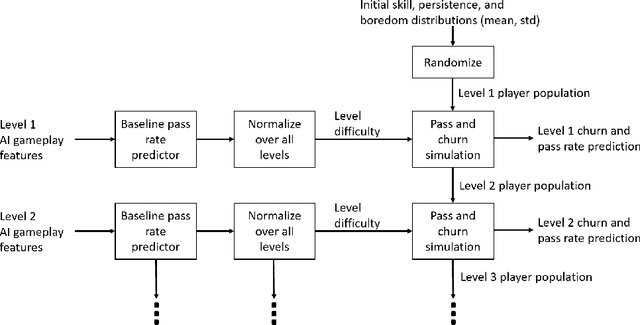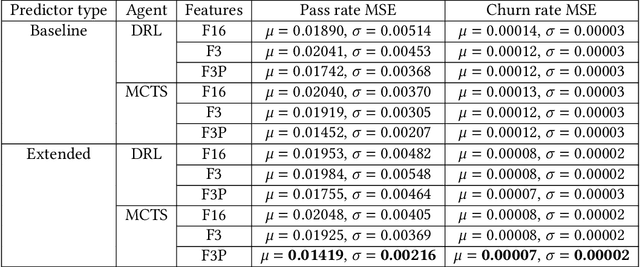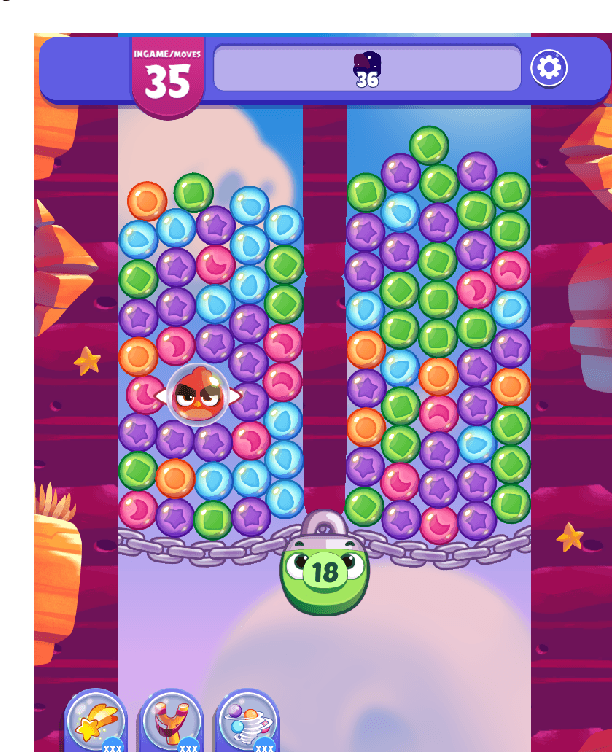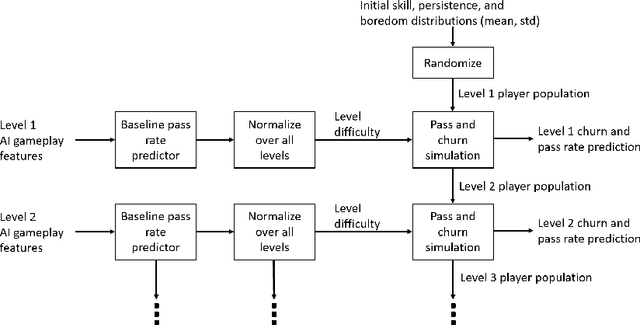Henri Heiskanen
Rovio Entertainment, Espoo, Finland
Predicting Game Engagement and Difficulty Using AI Players
Jul 26, 2021



Abstract:This paper presents a novel approach to automated playtesting for the prediction of human player behavior and experience. It has previously been demonstrated that Deep Reinforcement Learning (DRL) game-playing agents can predict both game difficulty and player engagement, operationalized as average pass and churn rates. We improve this approach by enhancing DRL with Monte Carlo Tree Search (MCTS). We also motivate an enhanced selection strategy for predictor features, based on the observation that an AI agent's best-case performance can yield stronger correlations with human data than the agent's average performance. Both additions consistently improve the prediction accuracy, and the DRL-enhanced MCTS outperforms both DRL and vanilla MCTS in the hardest levels. We conclude that player modelling via automated playtesting can benefit from combining DRL and MCTS. Moreover, it can be worthwhile to investigate a subset of repeated best AI agent runs, if AI gameplay does not yield good predictions on average.
Predicting Game Difficulty and Churn Without Players
Aug 29, 2020



Abstract:We propose a novel simulation model that is able to predict the per-level churn and pass rates of Angry Birds Dream Blast, a popular mobile free-to-play game. Our primary contribution is to combine AI gameplay using Deep Reinforcement Learning (DRL) with a simulation of how the player population evolves over the levels. The AI players predict level difficulty, which is used to drive a player population model with simulated skill, persistence, and boredom. This allows us to model, e.g., how less persistent and skilled players are more sensitive to high difficulty, and how such players churn early, which makes the player population and the relation between difficulty and churn evolve level by level. Our work demonstrates that player behavior predictions produced by DRL gameplay can be significantly improved by even a very simple population-level simulation of individual player differences, without requiring costly retraining of agents or collecting new DRL gameplay data for each simulated player.
 Add to Chrome
Add to Chrome Add to Firefox
Add to Firefox Add to Edge
Add to Edge